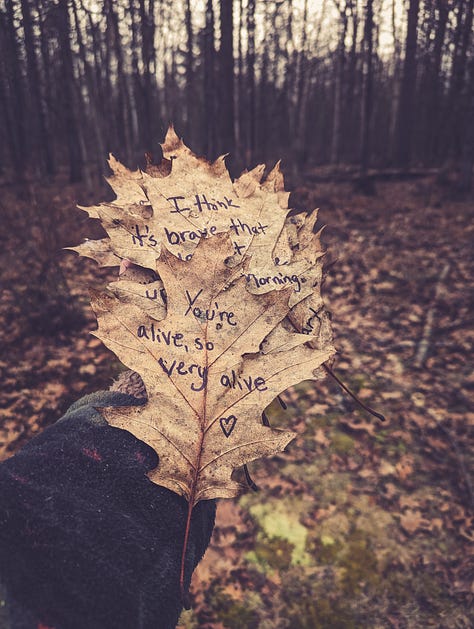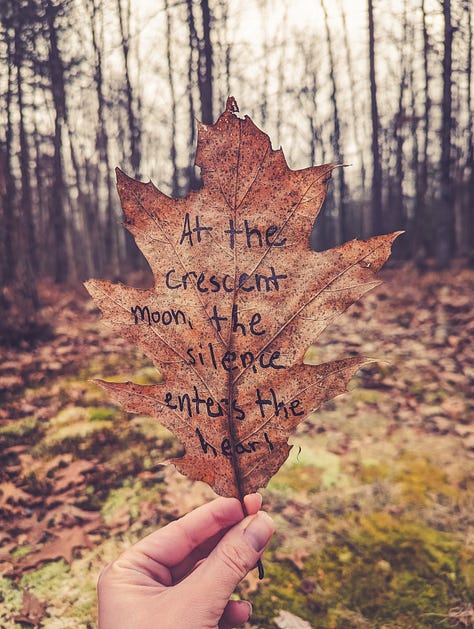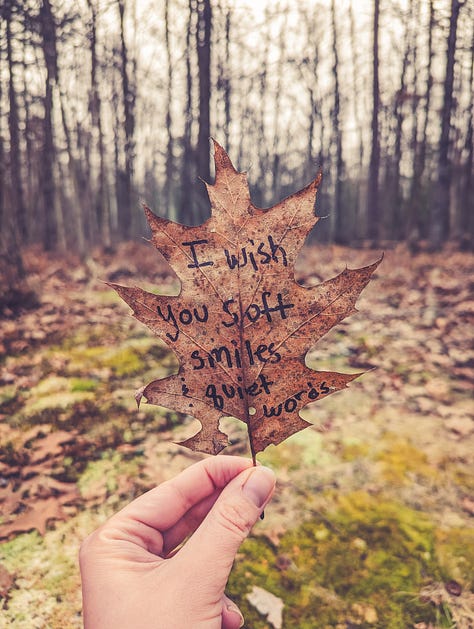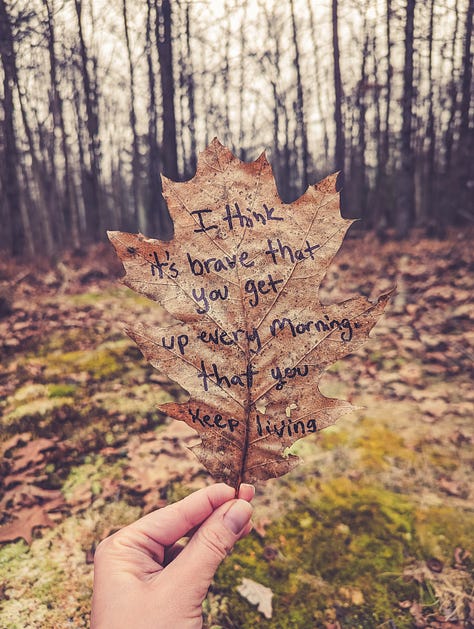I came across a deer skeleton in the woods. It was nearly fully intact with the antlers attached to the skull, the skull to the spine, the spine to the rib cage, the whole thing gently curving around itself. This beautiful masterpiece of mortality stood out to me. It’s not often bones remain in such a state in the hungry woods.
When I lived in Colorado, sun bleached skeletons such as this dotted the front range like roadside shrines. The lack of moisture in the high desert preserves everything the light touches until a scavenger or bone collector carries them away. But here in the land of forests surrounded by lakes, all things that die are quickly consumed by the decaying woodland floor. It is rare to find bones that have not decomposed with their flesh. The forest is a voracious beast that never turns down an offering.
So when I saw this skeleton, all pearly white and posed almost as if it were meant to be found, I paid attention. It felt like a gift to be presented with something so perfectly preserved. To be let in on the secret of where this deer took its last breath. It was a moment of intimacy and divinity between those bones and me.
I’ve learned over the years that the land sends us love letters like these all the time. An elegant feather that falls in our path, a perfectly shaped snowflake on our nose, the first warm wind of spring, a bird call, the sway of a pine. These soft quiet moments are the purest definitions of unconditional love. It isn’t a grand gesture, but an appreciative whisper. I’ve seen the same between us humans in unguarded looks and gentle embraces.
Nature is a primal thing, unconcerned with our concepts of “right” and “wrong”, “good” and “bad”. But it is in this primal state that we are shown what love truly looks like. True love is the thing that remains when all preconceptions, expectations and control is stripped away.
Nature shows us that love isn’t an intention, but a state of being. When we shift to this mindset, the world unfolds.
Learn how to read
the love letters
sent by the wind and rain,
the snow and moon.~ Ikkyū (Zen Buddhist monk and poet, 1394-1481)
How is it we learn to read these love letters then? To learn the language of the natural world, we have to soften. When we soften the senses, soften our emotions, our convictions, perspectives, and actions, we leave space for this infinite wisdom to seep in.
I was asked once in an interview what my connection with the natural world feels like. My answer was simply silence, stillness. The absolute greatest love always comes through the strongest in the quietest moments. And nothing quiets the mind as well as the land, sky, and stars. We can’t battle our way into the wilderness and demand that it love us. We need to romance the land before it will share with us its secrets.
at the crescent moon
the silence
enters the heartat her sewing
the needle drops —
the quail’s cryrouged lips
forgotten —
clear spring watergreen grass —
between, between the blades
the color of the watergreen leaves or fallen leaves
become one —
in the flowering snowthis old heart
looks all day long
at the peonies~ Chiyo-ni (Japanese haiku poet, 1703-1775)
This poem is perhaps the entire answer. We learn to read these love letters by welcoming silence, weaving the natural into the mundane, observing connections, devoting time, the most precious of all, to the world around us.
In all honesty, it often feels like the world is a dangerous cold place. But these small messages sent to us give us a place for our hearts to rest, even if just for a breath.
An invitation
However you did or did not celebrate Valentine’s Day yesterday, you can still use this moment in the year to send some love letters of your own back to the land. Simply write a message on a leaf and let the wind carry it away or place it in a much loved tree hollow. Acts like these can also open up lines of communication.






Much love,
Val
If you want to move deeper into a seasonal land-based life, consider ordering my 2024 edition of the Lunica Planner. Because learning to live in tune with the land doesn’t come from grand gestures or life-altering shifts, but rather from daily routines, devotions and observations of the land and how we relate to it.
Lunica was created to be a gardener’s almanac and planner, complete with lunar gardening guides, record keeping, recipes, essays, and plenty of space to journal, plan and reflect.
Purchasing a planner also helps support this publication!
Thank you so much for being here! I also write a subscription-based newsletter that helps expand your plant knowledge by combining science and spirit. We go past surface level learning and dive deep into the multi-layered world of herbalism and gardening with practical recipes, case studies, tutorials, story, and folklore to bring your understanding into practice.





Beautiful and heartfelt- thank you ❤️